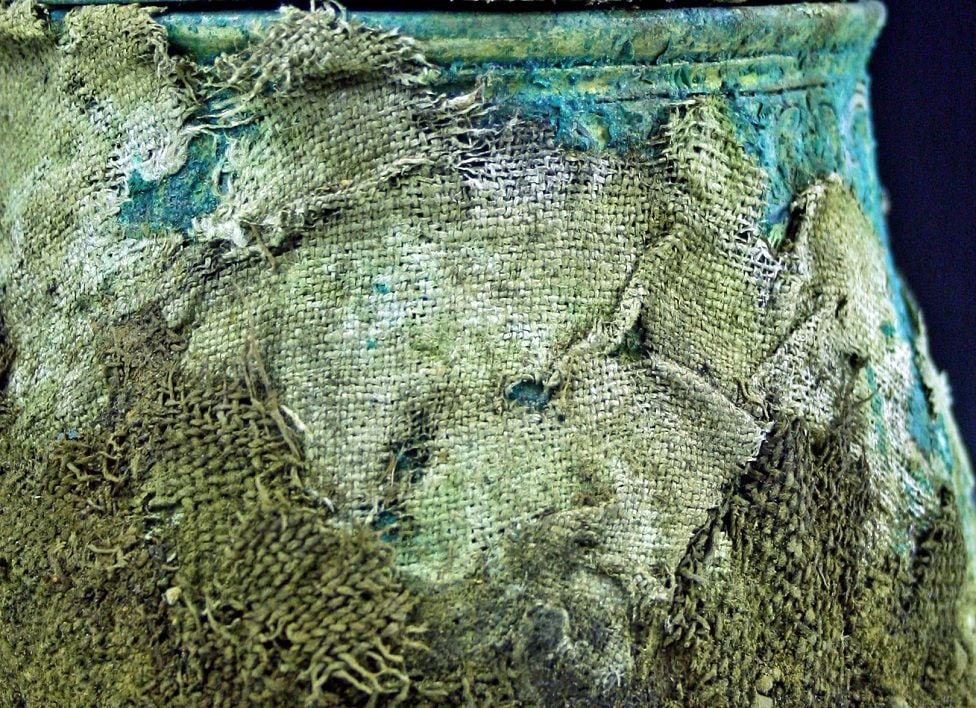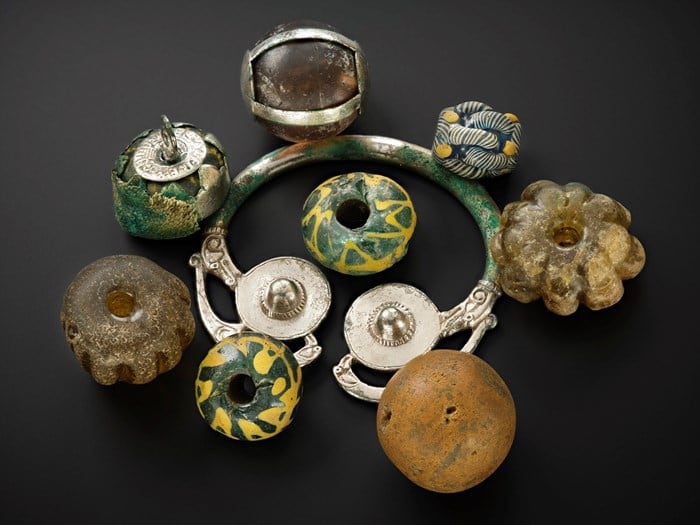Fantazie!  Korálky, rytecké práce, tauzování zlatem... Fascinující řemeslné dovednosti dávných mistrů!
Korálky, rytecké práce, tauzování zlatem... Fascinující řemeslné dovednosti dávných mistrů!
Scotland's most important treasure shocks again with new information
Categories: Nálezy nejenom s detektorem ve Velké Británii a Irsku
Scotland's largest silver set and Britain's largest gold set of the Viking period was found in south-west Scotland by Derek McLennan, a Scottish army veteran and entrepreneur. After seven years of cleaning, conservation and detailed research, it has finally 'come home' to Galloway where it will be on display until next summer. In doing so, the newly discovered information fundamentally changes the fascinating story of this incredible treasure of global significance.
According to experts, one of Britain's most important archaeological finds of the century is now on display in the Kirkcudbright Gallery, but it is permanently part of National Museum of Scotland (NMS) in Edinburgh, which bought the treasure into its collection years ago with the help of voluntary donors and a government 'lottery' grant. It will be on display in Dumfries and Galloway until July next year, after which it will go to Aberdeen Art Gallery where it will be on display until October 2022.
"It's a great opportunity to finally have the Galloway Treasure in Kirkcudbright," said Dr Adrian Maldonado of the NMS. "It's been here for a long term exhibition, even longer than the one in Edinburgh. It's a fantastic opportunity to see this treasure cleaned and conserved. The significance of the collection can hardly be overstated. It includes artefacts that make it absolutely unique. In terms of quantity, there is more silver in this hoard than in any other hoard ever found in Scotland. At the same time, it contains more gold than any other Viking hoard in Britain or Ireland. Some of the objects are completely unique, we are seeing them for the very first time, and we have never found anything like them before."
"There is something unexpected at every turn in the Galloway Hoard," explained NMS Curator Dr Martin Goldberg. "It keeps telling more and more stories," he added. "The latest one relates to a lidded jar that contained some of the most valuable parts of the treasure. It was originally thought to have come from continental Europe, but a new 3D model of the vessel suggests it may have originated from much further afield."
Research has also shown that the wool encasing the vessel is much older and even predates the Viking period: "This is only the third silver and gilded vessel to be found as part of a Viking hoard in the UK, so we expected it to be similar to the previous two," Dr Goldberg said. "However, the 3D model showed that the vessel did not come from the Carolingian (Holy Roman) Empire of continental Europe, as we expected based on other similar examples. The decoration and design depicts leopards, tigers and religious symbols of Zoroastrianism, referring to Central Asian origins. Radiocarbon dating of the wool places its age between 680 and 780 AD. The vessel is therefore non-European and the wool is at least 100 or possibly even 200 years older."
According to NMS conservator Mary Davis, work on the hoard involved a wide range of tasks: "The conservation and research so far have really gone hand in hand, revealing fantastic details about each object that have allowed us to piece together the story of the treasure," she said. "I am delighted that the exhibition will convey the true meaning of this process of discovery."
Following the discovery of the set and its publication seven years ago, the treasure was literally "fought over". Dumfries and Galloway Council hoped to acquire Scotland's most important treasure of the past century for a new gallery in Kirkcudbright. The main argument was the legitimate requirement for the collection to remain in the area in which it was found. However, the NMS said that their base in Edinburgh was best equipped to restore and preserve the collection of over 100 artefacts from the set. The dispute was eventually settled by royal officials, who allocated the treasure to Edinburgh. The NMS then undertook to loan the collection to Kirkcudbright in the future.
John Martin, vice-chairman of the local government committee, said that although Edinburgh is the treasure's permanent home, there will always be some selected parts of it on display in the region: "There will always be some of Galloway's treasure on display in the galleries. It's not that we will never see it again after nine months. I know there was some disappointment at the time (when the set was allocated), but when you see the treasure, it is clear that it is a treasure of national importance. And I believe Edinburgh is the right place for it to be displayed permanently."
The exhibition takes visitors through the different layers of objects just as they were gradually revealed in southern Scotland. As research continues, it may yet reveal much about the treasure's life and origins at the time.
Roman Nemec










Sources: bbc.com, nms.ac.uk, thecourier.co.uk
The article is included in categories:



